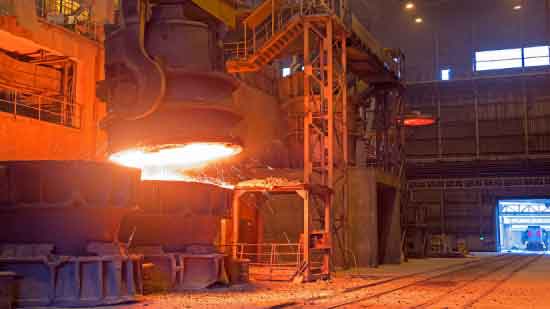
Steel sand casting offers several advantages that make it a popular choice for industrial production. Here are some key advantages of steel sand casting:
- Versatility: Steel sand casting can accommodate a wide range of part sizes, shapes, and complexities. It allows for the production of intricate and highly detailed components, making it suitable for diverse industrial applications.
- Cost-Effective: Compared to other casting methods, steel sand casting is a cost-effective solution for medium to large production volumes. The relatively low tooling costs and the ability to reuse sand molds contribute to its cost efficiency.
- Design Flexibility: Steel sand casting allows for design flexibility, enabling the production of complex geometries, undercuts, and internal features. It offers freedom of design, making it ideal for manufacturing components with intricate shapes or internal cavities.
- Material Selection: Steel sand casting is compatible with a wide range of steel alloys, including carbon steels, low alloy steels, and stainless steels. This flexibility in material selection allows for the production of steel components with different mechanical and corrosion-resistant properties.
- High Strength and Durability: Steel castings produced through sand casting exhibit excellent mechanical properties, including high strength, toughness, and wear resistance. Steel is known for its exceptional durability, making it suitable for applications where robustness and longevity are essential.
- Good Surface Finish: Steel sand casting can achieve a good surface finish, reducing the need for extensive post-casting machining or surface treatment. This can save time and costs in the production process.
- Scalability: Steel sand casting is suitable for both small and large-scale production runs. It can accommodate single-piece production as well as higher volume production, providing scalability and flexibility to meet varying production demands.
Steel sand casting finds applications across a wide range of industries, including:
- Automotive: Steel sand casting is extensively used in the automotive industry for producing engine components, transmission parts, suspension components, and brake system components.
- Heavy Machinery and Equipment: The construction, agriculture, and mining industries rely on steel sand casting to manufacture heavy machinery components such as gears, frames, brackets, and housings.
- Oil and Gas: Steel sand casting is employed to produce components used in oil and gas exploration and production, including valve bodies, pump parts, pipe fittings, and connectors.
- Power Generation: Steel sand casting is used in the power generation industry for producing turbine components, such as blades, housings, and impellers.
- Railway and Transportation: Steel sand casting is utilized in the manufacturing of railway components, such as bogie frames, brake system components, and couplers.
- Mining and Construction: Steel sand casting is employed in the mining and construction sectors to produce components like crusher parts, wear plates, and mining equipment components.
- General Industrial Applications: Steel sand casting is also used in various general industrial applications, including valves, pumps, machine tool components, and agricultural equipment parts.
Steel sand casting’s versatility, cost-effectiveness, and ability to produce durable components make it a preferred choice in industrial production. Its wide range of applications demonstrates its suitability for diverse industries and underscores its importance in manufacturing processes.
